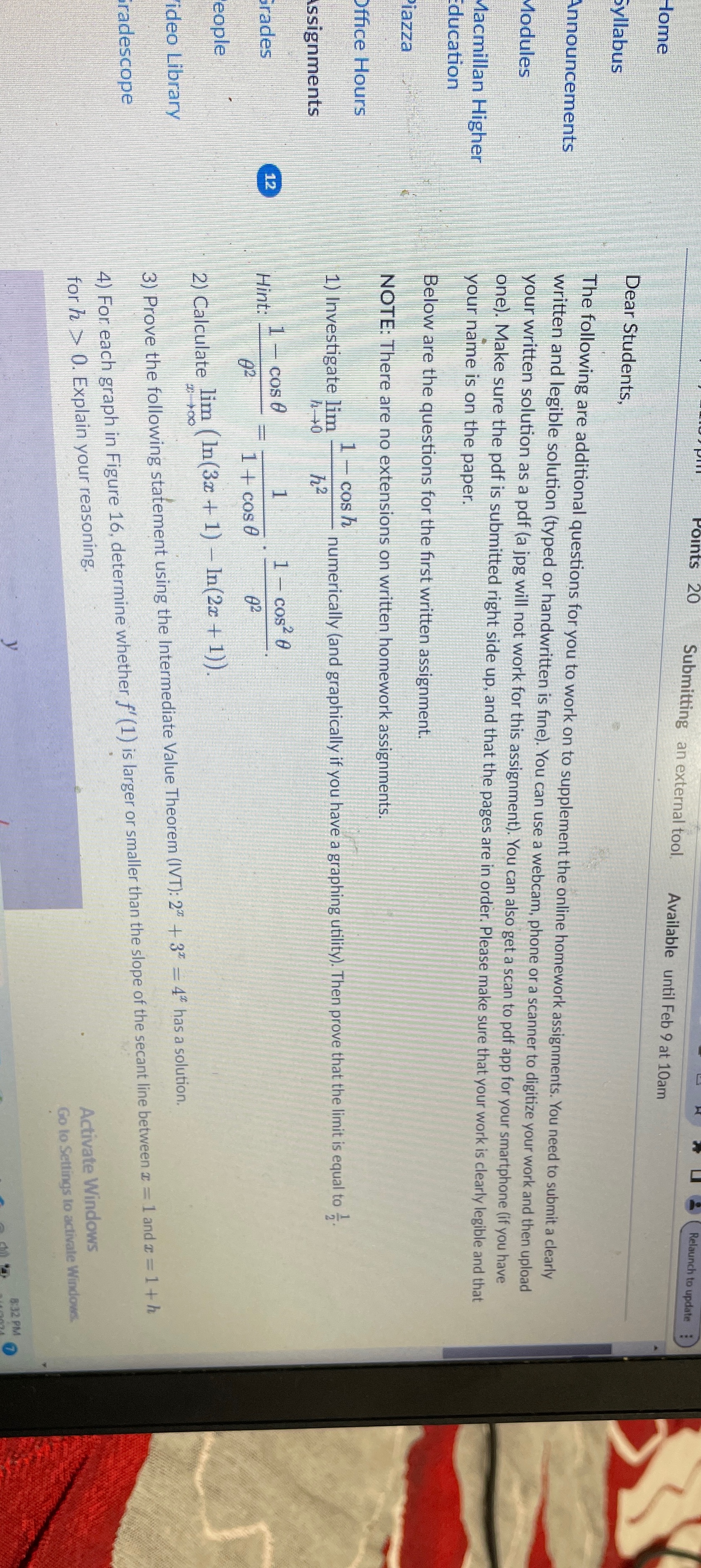Question
Home Available until Feb 9 at 10 am Relaunch to update Submitting an external tool 9 at 10 am Dear Students, The following are additional
Home\ Available until Feb 9 at 10 am\ Relaunch to update\ Submitting\ an external tool\ 9 at 10 am\ Dear Students,\ The following are additional questions for you to work on to supplement the online homework assignments. You need to submit a clearly written and legible solution (typed or handwritten is fine). You can use a webcam, phone or a scanner to digitize your work and then upload your written solution as a pdf (a jpg will not work for this assignment). You can also get a scan to pdf app for your smartphone (if you have one). Make sure the pdf is submitted right side up, and that the pages are in order. Please make sure that your work is clearly legible and that your name is on the paper.\ Below are the questions for the first written assignment.\ NOTE: There are no extensions on written homework assignments.\ Investigate
\\\\lim_(h->0)(1-cosh)/(h^(2))numerically (and graphically if you have a graphing utility). Then prove that the limit is equal to
(1)/(2).\ 12\ Hint:
(1-cos\\\\theta )/(\\\\theta ^(2))=(1)/(1+cos\\\\theta )*(1-cos^(2)\\\\theta )/(\\\\theta ^(2)).\ Calculate
\\\\lim_(x->\\\\infty )(ln(3x+1)-ln(2x+1)).\ Prove the following statement using the Intermediate Value Theorem (IVT):
2^(x)+3^(x)=4^(x)has a solution.\ For each graph in Figure 16, determine whether
f^(')(1)is larger or smaller than the slope of the secant line between
x=1and
x=1+hfor
h>0. Explain your reasoning.

Step by Step Solution
There are 3 Steps involved in it
Step: 1

Get Instant Access to Expert-Tailored Solutions
See step-by-step solutions with expert insights and AI powered tools for academic success
Step: 2

Step: 3

Ace Your Homework with AI
Get the answers you need in no time with our AI-driven, step-by-step assistance
Get Started


